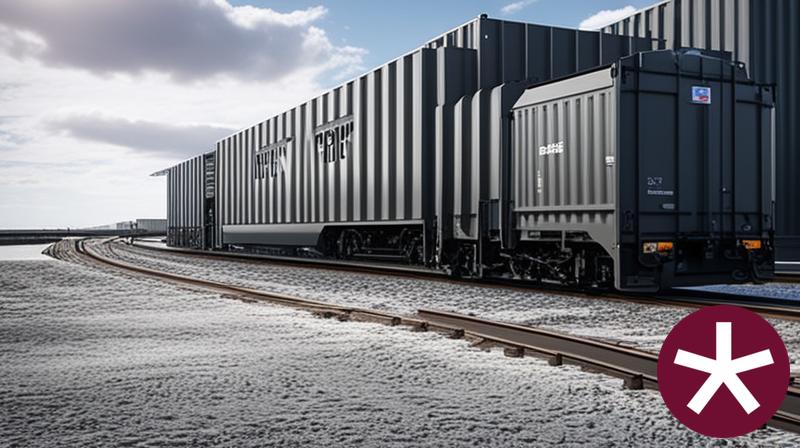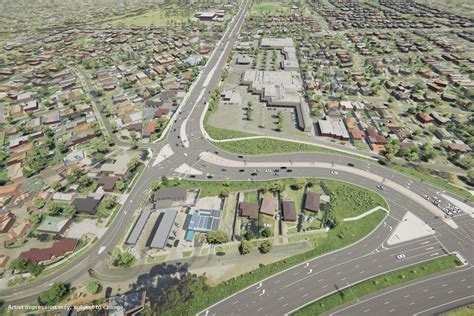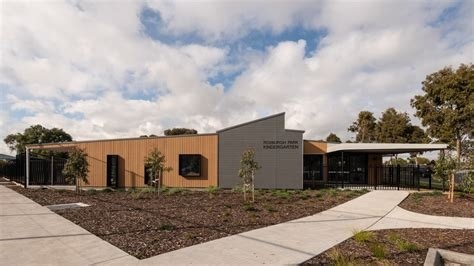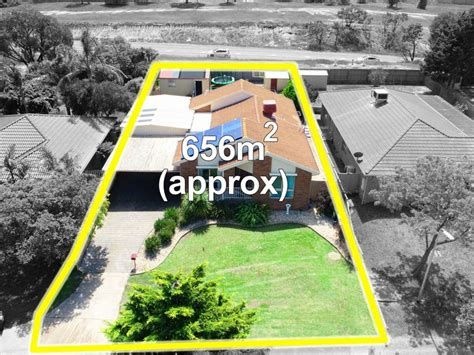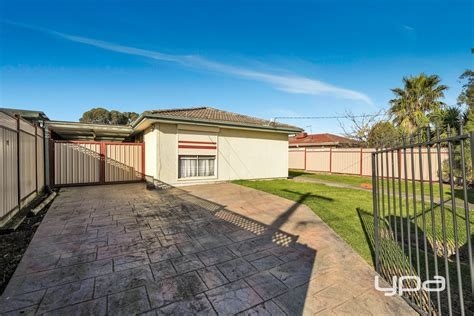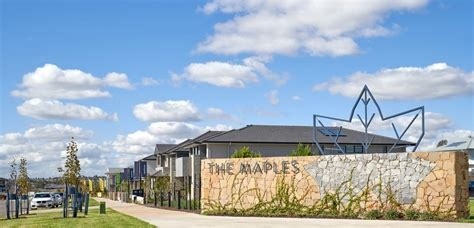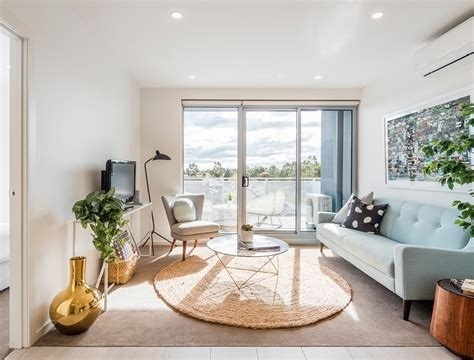Chart Color Schemes
est. as @ -- *
ABS ERP | -- people | --
2021 Census | -- people
Sales Activity
Curious about local property values? Filter the chart to assess the volume and appreciation (including resales) trends and regional comparisons, or scroll to the map below view this information at an individual property level.
Find a Recent Sale
Sales Detail
Population
An assessment of population growth drivers in Meadow Heights reveals an overall ranking slightly below national averages considering recent, and medium term trends
Meadow Heights' population, as of Aug 2025, is approximately 15,016, showing an increase of 126 people since the 2021 Census which recorded a population of 14,890. This growth is inferred from ABS's estimated resident population of 14,960 as of June 2024 and 78 validated new addresses since the Census date. The population density is 3,243 persons per square kilometer, placing Meadow Heights in the upper quartile relative to national locations assessed by AreaSearch. Overseas migration contributed approximately 70.7% of overall population gains recently. AreaSearch uses ABS/Geoscience Australia projections for each SA2 area released in 2024 with a base year of 2022, and VIC State Government's Regional/LGA projections from 2023 adjusted to SA2 levels for areas not covered by the former data.
Growth rates by age group are applied across all areas from 2032 to 2041. By 2041, Meadow Heights' population is projected to increase by 5,331 persons, a 35.1% rise over 17 years.
Frequently Asked Questions - Population
Development
AreaSearch assessment of residential development drivers sees a low level of activity in Meadow Heights, placing the area among the bottom 25% of areas assessed nationally
Meadow Heights has seen approximately 29 new homes approved annually. Development approval data is produced by the Australian Bureau of Statistics on a financial year basis, totalling 148 approvals across the past five financial years from FY-20 to FY-25. As of now, there have been 3 approvals in FY-26. Despite population decline over this period, development activity has been adequate relative to demand, creating a balanced market with good buyer choice.
New homes are being built at an average value of $301,000, under regional levels, suggesting more accessible housing choices for buyers. This financial year has seen $336,000 in commercial development approvals, indicating a predominantly residential focus. Compared to Greater Melbourne, Meadow Heights shows substantially reduced construction activity, with 87.0% below the regional average per person. This constrained new construction typically reinforces demand and pricing for existing dwellings, which is also under the national average, suggesting an established area with potential planning limitations. New development consists of 56.0% standalone homes and 44.0% townhouses or apartments, representing a shift from the area's existing housing composition (currently 82.0% houses). This location has approximately 635 people per dwelling approval, indicating an established market.
Future projections show Meadow Heights adding 5,275 residents by 2041. At current development rates, housing supply may struggle to match population growth, potentially increasing buyer competition and supporting price increases.
Frequently Asked Questions - Development
Infrastructure
Meadow Heights has strong levels of nearby infrastructure activity, ranking in the top 40% nationally
AreaSearch has identified eight projects that could impact the area. Key projects include Redwood Close Reserve Playspace Upgrade, Meadow Heights Shopping Centre Redevelopment, Canadian Court Reserve Playspace Improvements, and 1500 Pascoe Vale Road Business Park. The following list details those likely to be most relevant.
Professional plan users can use the search below to filter and access additional projects.
INFRASTRUCTURE SEARCH
Frequently Asked Questions - Infrastructure
Stockland Highlands - Master-Planned Community
Australia's largest master-planned residential community spanning over 20 years across Craigieburn and Mickleham. Currently home to 13,000+ residents with diverse housing options from land lots to house packages and townhomes. Features extensive community facilities including shopping centres, schools, medical facilities, sporting complexes, parks, lake, and retirement living. Award-winning development with ongoing construction and new releases through 2026.
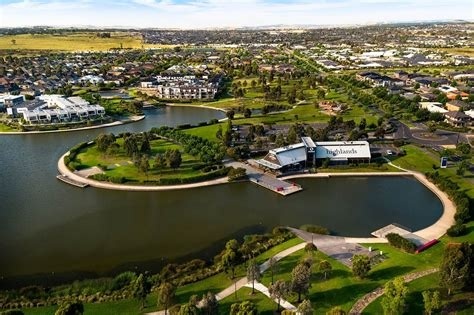
Roxy Central
A 5,000 sqm neighborhood shopping center completed in 2021 featuring FoodWorks supermarket, gym, pharmacy, medical center, banking, Australia Post, cafes, takeaway outlets, discount stores, hair and beauty services, optometrist, and fresh food operators, plus a two-story office building providing local business opportunities.
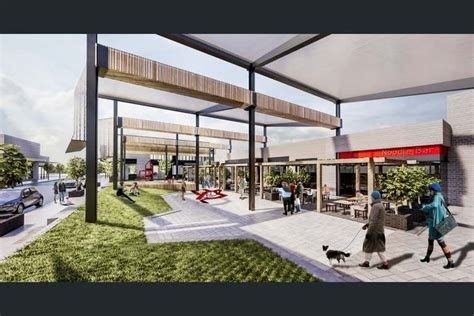
Meadow Heights Shopping Centre Redevelopment
Development and use of land at the shopping centre for a childcare centre, restricted recreation facility, indoor recreation facility, and display signage. Plans for a new childcare centre and extension to the existing centre are currently underway.
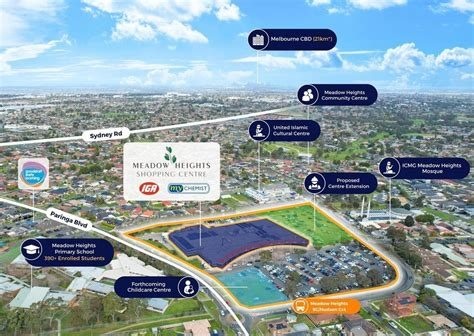
Upfield Line Extension to Campbellfield
The project proposes extending the Upfield railway line from its current terminus at Upfield station in Campbellfield further north, including a new station at Campbellfield Plaza, as part of broader plans to connect to Roxburgh Park and potentially Wallan, to enhance public transport connectivity, reduce road congestion, and support population growth in Melbourne's northern suburbs.
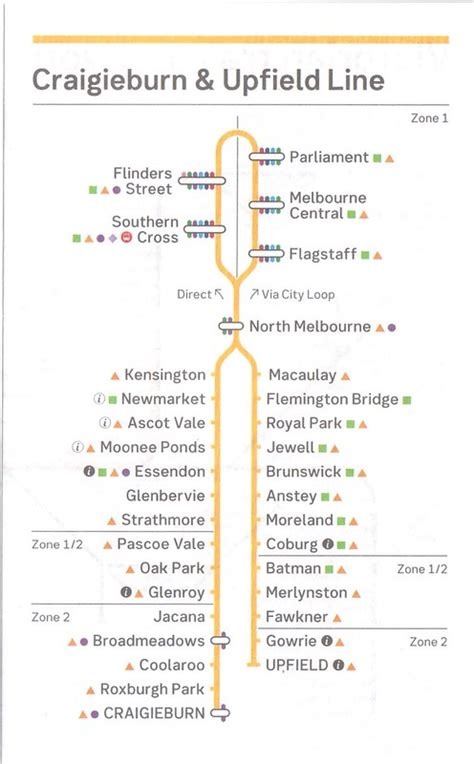
The Base Craigieburn
The Base is a 21.6-hectare mixed-use retail, commercial, and entertainment destination in Craigieburn, featuring dual frontages to the Hume Highway and Hume Freeway. It includes national brands such as Hungry Jacks, KFC, ALDI, Fantastic Furniture, Flip Out, and others, serving the Northern Growth Corridors projected 350,000 new residents by 2036.
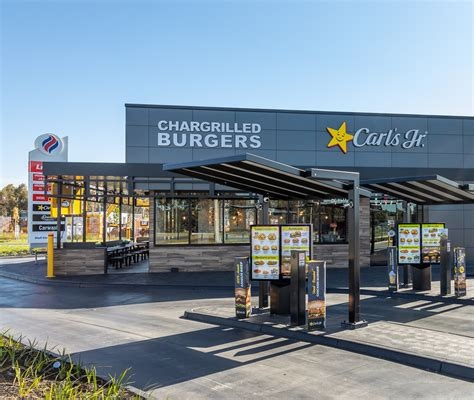
1500 Pascoe Vale Road Business Park
A fully operational mixed-use business park featuring two completed stages. Stage One includes BP service station, Oporto, and Bridgestone Select. Stage Two encompasses medical facilities including Pascoe Vale Road Medical Centre and Heartwest Cardiology, childcare (Kool Kids), VicRoads testing centre, commercial offices, automotive services (Ozzy Tyres), and retail precincts. The development serves as a major community hub providing essential services to the rapidly growing northern Melbourne corridor.
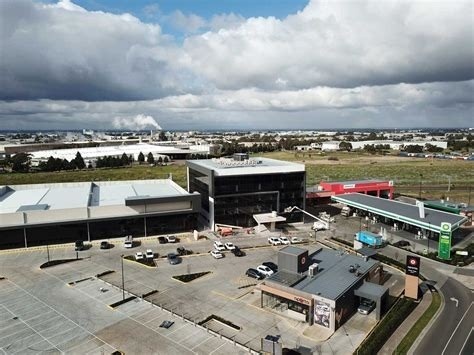
John Ilhan Memorial Reserve Synthetic Surface Upgrade
FIFA 1-star certified synthetic soccer pitch installation at John Ilhan Memorial Reserve. Features 60mm pile height synthetic surface with specialized drainage system, designed to meet FIFA AAA performance criteria. Total surfaced area of 9,360m2 including 105m x 68m pitch with 6m run-off zones. Provides all-weather community access to professional-grade sporting facilities.
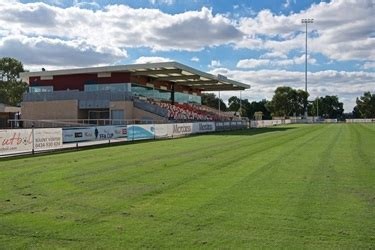
Upfield Line Extension to Roxburgh Park and Craigieburn
Proposed extension, duplication, and electrification of the Upfield rail line from Upfield to Roxburgh Park and potentially Craigieburn, including track duplication between Gowrie and Upfield stations. The project aims to improve metropolitan rail services in Melbourne's northern growth corridor and relieve congestion on the Craigieburn line.
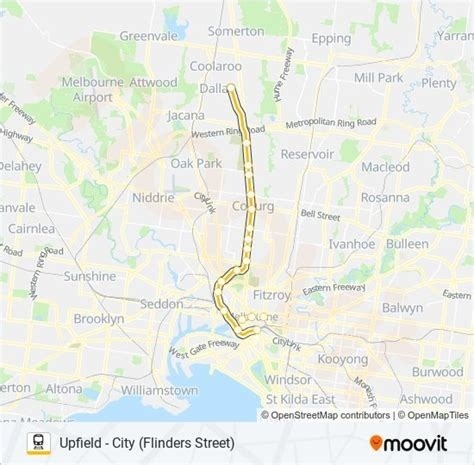
Employment
Employment drivers in Meadow Heights are experiencing difficulties, placing it among the bottom 20% of areas assessed across Australia
Meadow Heights' workforce is skilled with notable representation in the construction sector. The unemployment rate was 17.4% as of June 2025.
Employment growth over the past year was estimated at 3.1%. As of June 2025, 5,022 residents were employed while the unemployment rate was 12.8% higher than Greater Melbourne's rate of 4.6%. Workforce participation in Meadow Heights was significantly lower at 43.1%, compared to Greater Melbourne's 64.1%. Leading employment industries among residents included health care & social assistance, construction, and manufacturing.
The area had a particularly notable concentration in transport, postal & warehousing, with employment levels at 2.0 times the regional average. However, professional & technical services were under-represented, with only 4.3% of Meadow Heights' workforce compared to 10.1% in Greater Melbourne. Over the 12 months to June 2025, employment increased by 3.1% while labour force increased by 4.6%, causing the unemployment rate to rise by 1.2 percentage points. In comparison, Greater Melbourne saw employment grow by 3.5%, labour force expand by 4.0%, and unemployment rise by 0.5 percentage points. State-level data from Sep-25 showed Victoria's employment grew by 1.08% year-on-year, with the state unemployment rate at 4.7%. National employment forecasts from Jobs and Skills Australia projected growth of 6.6% over five years and 12.6% over ten years for Meadow Heights, using a simple weighting extrapolation based on its local employment mix.
Frequently Asked Questions - Employment
Income
Income metrics place the area in the bottom 10% of locations nationally according to AreaSearch analysis
Meadow Heights had a median taxpayer income of $38,897 and an average of $45,666 in financial year 2022, according to postcode level ATO data aggregated by AreaSearch. This was below the national average, compared to Greater Melbourne's median income of $54,892 and average income of $73,761 in the same period. Based on Wage Price Index growth of 10.11% since financial year 2022, estimated incomes as of March 2025 would be approximately $42,829 (median) and $50,283 (average). Census data shows household income ranked at the 18th percentile ($1,274 weekly), with personal income at the 1st percentile. The earnings profile indicates that the $1,500 - 2,999 bracket dominated with 30.2% of residents (4,534 people), similar to regional levels where 32.8% occupied this range. Housing affordability pressures were severe, with only 80.7% of income remaining, ranking at the 16th percentile.
Frequently Asked Questions - Income
Housing
Meadow Heights is characterized by a predominantly suburban housing profile, with above-average rates of outright home ownership
Meadow Heights' latest Census showed 82.3% houses and 17.7% other dwellings (semi-detached, apartments, 'other'), compared to Melbourne metro's 87.6% houses and 12.4% other dwellings. Home ownership in Meadow Heights was 27.9%, with mortgaged dwellings at 40.3% and rented ones at 31.9%. The median monthly mortgage repayment was $1,460, below Melbourne metro's average of $1,834. Median weekly rent was $346, lower than Melbourne metro's $369. Nationally, Meadow Heights' mortgage repayments were significantly lower at $1,460 compared to Australia's average of $1,863, and rents were less at $346 compared to the national figure of $375.
Frequently Asked Questions - Housing
Household Composition
Meadow Heights features high concentrations of family households, with a higher-than-average median household size
Family households constitute 82.4% of all households, including 44.3% couples with children, 16.8% couples without children, and 19.5% single parent families. Non-family households comprise the remaining 17.6%, with lone person households at 14.8% and group households making up 2.9%. The median household size is 3.3 people, larger than the Greater Melbourne average of 3.2.
Frequently Asked Questions - Households
Local Schools & Education
Meadow Heights faces educational challenges, with performance metrics placing it in the bottom quartile of areas assessed nationally
The area's university qualification rate is 17.9%, significantly lower than Greater Melbourne's average of 37.0%. This represents both a challenge and an opportunity for targeted educational initiatives. Bachelor degrees are the most common at 12.3%, followed by postgraduate qualifications (3.8%) and graduate diplomas (1.8%). Trade and technical skills are prominent, with 26.0% of residents aged 15+ holding vocational credentials – advanced diplomas (9.4%) and certificates (16.6%).
Educational participation is high, with 35.1% of residents currently enrolled in formal education. This includes 11.8% in primary education, 9.5% in secondary education, and 5.6% pursuing tertiary education. The area has two primary schools, Meadow Heights Primary School and Bethal Primary School, serving a total of 651 students. Both schools focus exclusively on primary education, with secondary options available in surrounding areas. Local school capacity is limited, with 4.3 places per 100 residents compared to the regional average of 17.6, leading many families to travel for schooling.
Frequently Asked Questions - Education
Schools Detail
Nearby Services & Amenities
Transport
Transport servicing is good compared to other areas nationally based on assessment of service frequency, route connectivity and accessibility
Public transport analysis reveals 63 active transport stops operating within Meadow Heights. These stops are serviced by 7 individual routes, collectively providing 3,058 weekly passenger trips. Transport accessibility is rated as excellent, with residents typically located 177 meters from the nearest transport stop.
Service frequency averages 436 trips per day across all routes, equating to approximately 48 weekly trips per individual stop.
Frequently Asked Questions - Transport
Transport Stops Detail
Health
Meadow Heights's residents are healthier than average in comparison to broader Australia with prevalence of common health conditions quite low among the general population though higher than the nation's average across older, at risk cohorts
Meadow Heights residents have a relatively low prevalence of common health conditions compared to the general population. However, this figure is higher than the national average for older and at-risk cohorts. Only 47% of Meadow Heights residents have private health cover, lower than Greater Melbourne's 49.1% and the national average of 55.3%.
The most prevalent medical conditions are asthma (7.2%) and diabetes (6.9%). A total of 71.6% of residents report having no medical ailments, compared to 76.3% in Greater Melbourne. Meadow Heights has a higher proportion of seniors aged 65 and over at 13.6%, compared to Greater Melbourne's 10.8%. Health outcomes among this age group require more attention than the broader population.
Frequently Asked Questions - Health
Cultural Diversity
Meadow Heights is among the most culturally diverse areas in the country based on AreaSearch assessment of a range of language and cultural background related metrics
Meadow Heights has a culturally diverse population, with 50.0% born overseas and 74.3% speaking a language other than English at home. The dominant religion is Islam, practised by 52.7% of the population, compared to 24.1% in Greater Melbourne. Regarding ancestry, the top groups are Other (50.9%), Australian (11.5%), and English (8.9%).
Notably, Lebanese (8.5%) Vietnamese (3.6%) and Samoan (1.2%) ethnicities are more prevalent in Meadow Heights than regionally.
Frequently Asked Questions - Diversity
Age
Meadow Heights hosts a young demographic, positioning it in the bottom quartile nationwide
Meadow Heights has a median age of 34 years, which is lower than Greater Melbourne's average of 37 years and Australia's average of 38 years. Compared to Greater Melbourne, Meadow Heights has a higher proportion of residents aged 5-14 (14.6%) but fewer residents aged 35-44 (12.3%). Between the 2021 Census and the present, the percentage of residents aged 65-74 has increased from 7.4% to 8.3%, while the percentage of those aged 45-54 has decreased from 12.2% to 11.3%. By 2041, Meadow Heights' population is projected to change significantly. The 65-74 age group is expected to grow by 69%, adding 857 residents and reaching a total of 2,104.
